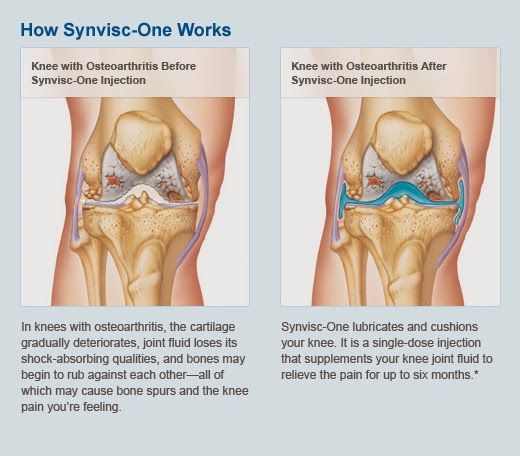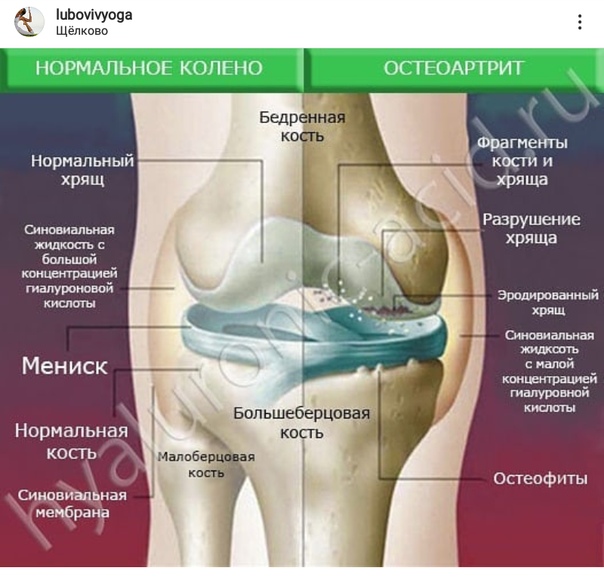Osteoarthritis injections knee. Osteoarthritis Knee Injections: Comprehensive Guide to Hyaluronan Treatment
How do hyaluronan injections treat knee osteoarthritis. What are the different types of viscosupplementation available. Who is a suitable candidate for knee osteoarthritis injections. What side effects can occur with hyaluronan treatment. How long does pain relief from knee injections typically last.
Understanding Hyaluronan Injections for Knee Osteoarthritis
Hyaluronan injections, also known as viscosupplementation, have emerged as a promising treatment option for individuals suffering from knee osteoarthritis. These injections aim to supplement the natural hyaluronan present in joint fluid, which acts as a lubricant and shock absorber. By introducing additional hyaluronan directly into the affected joint, these injections can help alleviate pain, improve mobility, and enhance overall joint function.
How do hyaluronan injections work?
Hyaluronan is a naturally occurring substance in joint fluid that provides lubrication and cushioning. In osteoarthritis, the concentration and quality of hyaluronan in the joint decrease. Injecting additional hyaluronan into the knee joint helps restore its viscoelastic properties, reducing friction between joint surfaces and potentially slowing down cartilage degradation.

Types of Hyaluronan Injections Available
Several formulations of hyaluronan injections are currently approved for treating knee osteoarthritis. These include:
- 1% Sodium hyaluronate (Euflexxa)
- High-molecular-weight hyaluronan (Orthovisc)
- Hylan G-F20 (Synvisc)
- Sodium hyaluronate (Hyalgan, Supartz)
Each of these products has unique characteristics in terms of molecular weight, concentration, and recommended injection frequency. The choice of product often depends on the patient’s specific needs and the physician’s preference.
Candidates for Knee Osteoarthritis Injections
Hyaluronan injections are typically recommended for patients with mild to moderate knee osteoarthritis who have not found sufficient relief from other conservative treatments. Ideal candidates include those who have tried and failed to achieve significant improvement with:
- Physical therapy
- Exercise regimens
- Heat or cold therapy
- Over-the-counter pain relievers
It’s important to note that these injections are currently only approved for treating knee osteoarthritis, although research is ongoing for their use in other joints.

The Injection Procedure: What to Expect
The process of receiving hyaluronan injections involves several steps:
- The knee area is cleaned and sterilized.
- A local anesthetic may be applied to minimize discomfort.
- Any excess fluid in the joint may be removed using a needle (aspiration).
- The hyaluronan solution is then injected directly into the joint space.
The number of injections required can vary depending on the specific product used. Some treatments involve a single injection, while others may require weekly injections for three to five weeks.
Is the injection procedure painful?
While the idea of a knee injection may sound intimidating, most patients report minimal discomfort during the procedure. The use of a local anesthetic helps numb the area, and the injection itself is typically quick and well-tolerated.
Potential Side Effects and Precautions
As with any medical procedure, hyaluronan injections carry some risk of side effects. The most common adverse reactions include:

- Temporary pain at the injection site
- Swelling of the knee joint
- Warmth or redness around the injection area
In rare cases, a more severe reaction called pseudo-septic arthritis may occur, characterized by significant swelling, redness, and pain. It’s crucial to inform your healthcare provider immediately if you experience any unusual symptoms following the injection.
Who should avoid hyaluronan injections?
These injections are not suitable for everyone. Contraindications include:
- Active skin infections near the injection site
- Joint infections
- Allergies to eggs or poultry (for most formulations, except Euflexxa)
Always discuss your complete medical history with your doctor before undergoing this treatment.
Effectiveness and Duration of Pain Relief
The efficacy of hyaluronan injections can vary among individuals. On average, patients begin to experience pain relief within 4 to 12 weeks after the injection series. The duration of relief can last for several months, with some patients reporting benefits for up to six months or longer.

How often can hyaluronan injections be repeated?
If the treatment proves effective, it can be repeated as necessary. Many patients undergo injection series on an annual or semi-annual basis to maintain pain relief and improved joint function. However, the optimal frequency of repeat treatments should be determined on an individual basis in consultation with a healthcare provider.
Comparing Hyaluronan Injections to Other Osteoarthritis Treatments
While hyaluronan injections have shown promise in managing knee osteoarthritis, they are just one of several treatment options available. It’s essential to understand how they compare to other interventions:
Hyaluronan vs. Corticosteroid Injections
Corticosteroid injections are another common treatment for knee osteoarthritis. Unlike hyaluronan, which aims to supplement joint fluid, corticosteroids work by reducing inflammation in the joint. Some key differences include:
- Onset of action: Corticosteroids typically provide faster relief (within 24-48 hours) compared to hyaluronan injections.
- Duration of effect: Corticosteroid benefits often last 6-12 weeks, while hyaluronan effects can persist for several months.
- Frequency of use: Corticosteroid injections are generally limited to 2-3 times per year due to potential cartilage damage with frequent use.
Hyaluronan vs. Oral Medications
Oral medications such as nonsteroidal anti-inflammatory drugs (NSAIDs) are often the first line of treatment for osteoarthritis. Hyaluronan injections may be considered when oral medications fail to provide adequate relief or when patients cannot tolerate their side effects.

Emerging Research and Future Directions
The field of osteoarthritis treatment is constantly evolving, with ongoing research into improving existing therapies and developing new ones. Some areas of current interest include:
- Combination therapies: Investigating the potential benefits of combining hyaluronan injections with other treatments such as platelet-rich plasma (PRP) or stem cell therapy.
- Improved formulations: Developing hyaluronan products with enhanced durability and effectiveness.
- Expanded applications: Exploring the use of hyaluronan injections for osteoarthritis in other joints beyond the knee.
As research progresses, we may see further refinements in viscosupplementation techniques and potentially broader applications for this treatment approach.
Making an Informed Decision About Knee Osteoarthritis Treatment
Choosing the right treatment for knee osteoarthritis is a decision that should be made in consultation with a healthcare professional. When considering hyaluronan injections, it’s important to:

- Discuss your complete medical history and current symptoms with your doctor
- Understand the potential benefits and risks of the procedure
- Explore all available treatment options and how they fit into your overall management plan
- Set realistic expectations for pain relief and improved function
Remember that osteoarthritis is a chronic condition, and successful management often involves a multifaceted approach combining various treatments and lifestyle modifications.
Are hyaluronan injections covered by insurance?
Coverage for hyaluronan injections varies among insurance providers. Many plans do cover these injections when deemed medically necessary, but there may be specific criteria that need to be met. It’s advisable to check with your insurance company regarding coverage details and any required pre-authorizations.
Lifestyle Modifications to Complement Injection Therapy
While hyaluronan injections can provide significant relief, they are most effective when combined with other osteoarthritis management strategies. Consider incorporating the following lifestyle modifications to maximize the benefits of your treatment:
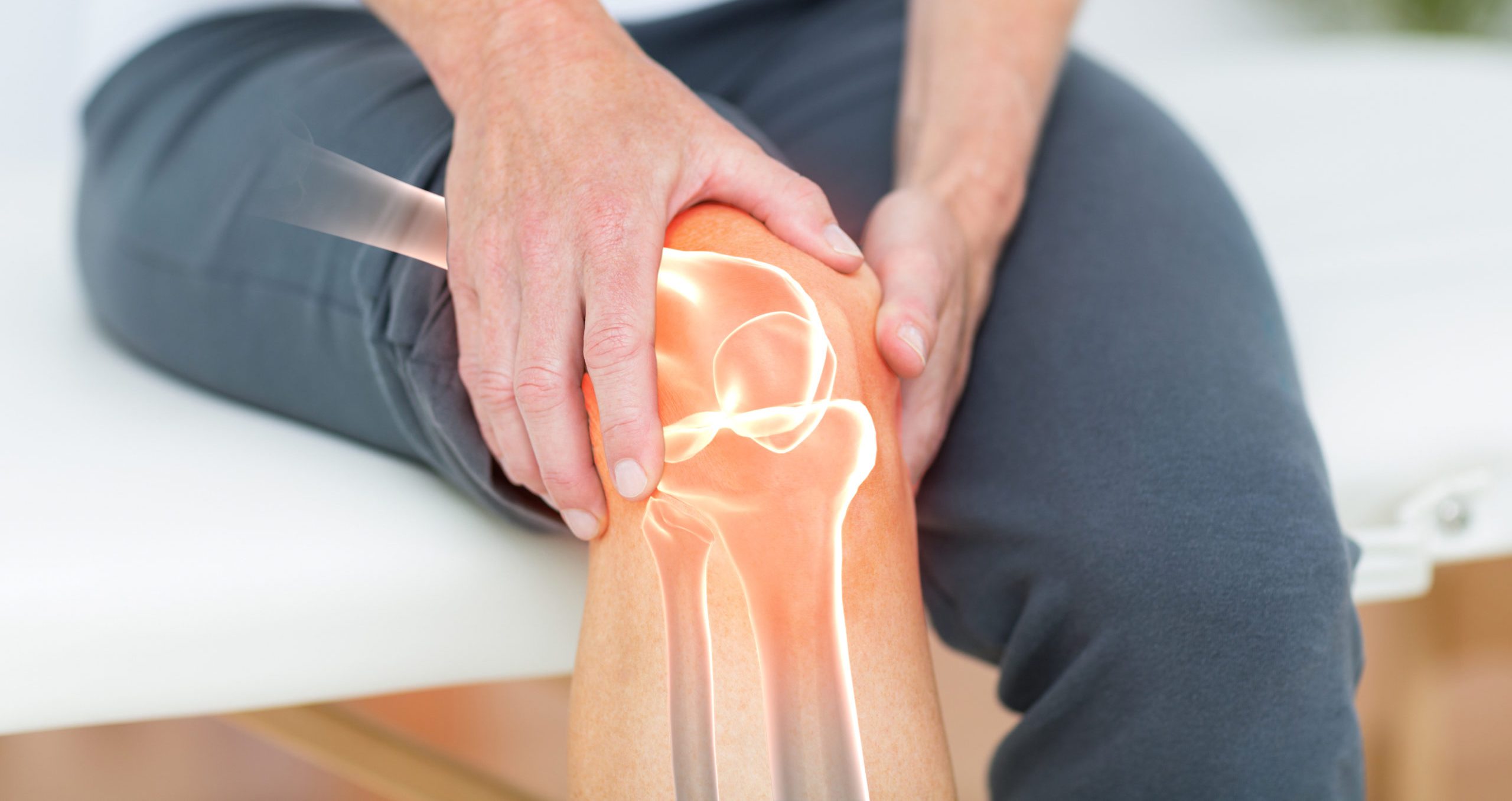
- Weight management: Maintaining a healthy weight reduces stress on your knee joints.
- Regular exercise: Low-impact activities like swimming or cycling can help strengthen the muscles supporting your knees.
- Physical therapy: Targeted exercises and techniques can improve joint flexibility and stability.
- Proper footwear: Wearing supportive shoes can help distribute weight more evenly and reduce joint stress.
- Assistive devices: Using canes or braces when necessary can provide additional support and alleviate pressure on affected joints.
By combining these approaches with hyaluronan injections, you may experience more comprehensive and lasting improvements in your knee osteoarthritis symptoms.
How can I prepare for a hyaluronan injection?
To ensure the best possible outcome from your hyaluronan injection, consider the following preparation steps:
- Inform your doctor about all medications and supplements you’re taking, as some may need to be temporarily discontinued.
- Avoid strenuous activities for 48 hours before the injection.
- Wear loose, comfortable clothing that allows easy access to your knee.
- Arrange for transportation home after the procedure, as driving immediately afterward is not recommended.
- Follow any specific pre-injection instructions provided by your healthcare provider.
Proper preparation can help minimize potential complications and enhance the overall effectiveness of the treatment.
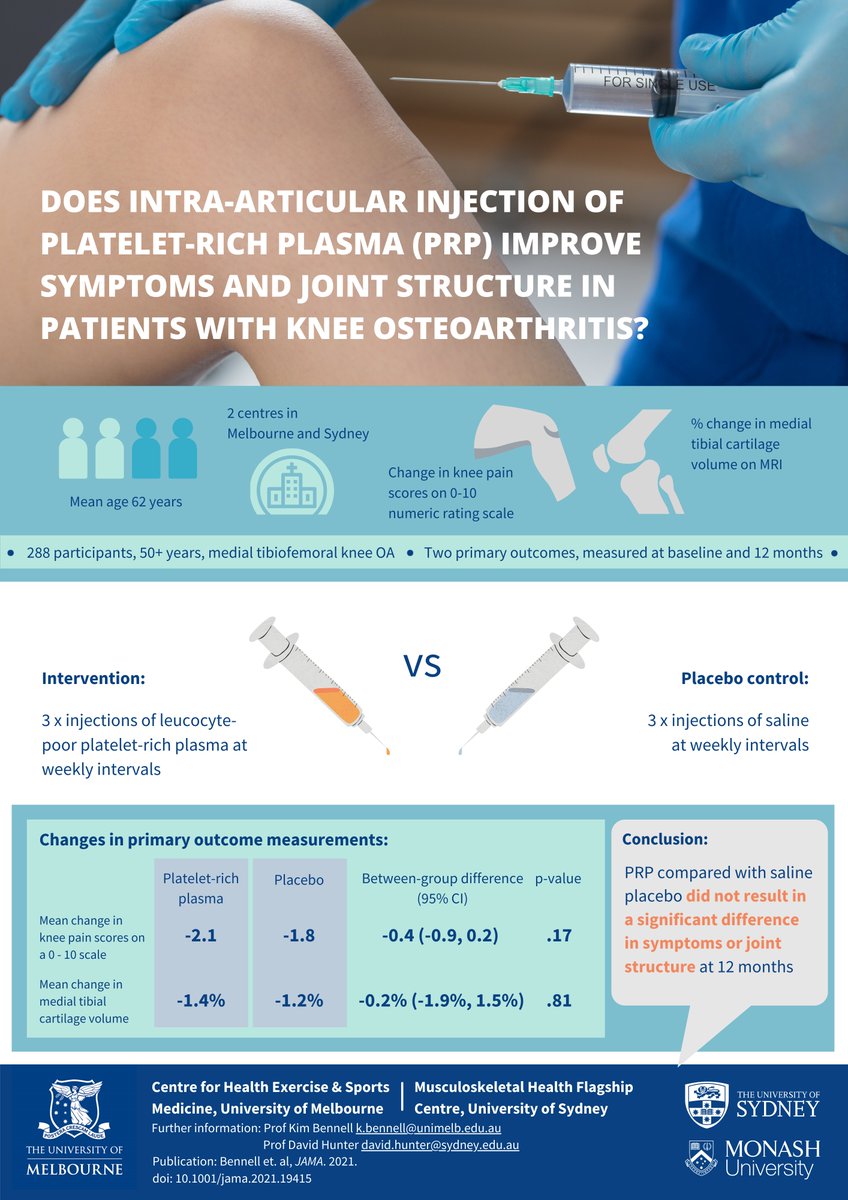
Treating Knee Osteoarthritis With Hyaluronan Injections
Written by WebMD Editorial Contributors
- How Do These Knee Osteoarthritis Injections Work?
- What Joints Can Be Treated With These Osteoarthritis Injections?
- Candidates for Knee Osteoarthritis Injections
- Side Effects of Knee Osteoarthritis Injections
- What to Expect From Knee Osteoarthritis Injections
There are several versions of hyaluronan injections — also called viscosupplementation — that are used to treat knee osteoarthritis. They are injected directly into the joint. They include:
- 1% Sodium hyaluronate (Euflexxa,)
- High-molecular-weight hyaluronan (Orthovisc)
- Hylan G-F20 (Synvisc)
- Sodium hyaluronate (Hyalgan , Supartz)
They can help reduce the pain in a knee affected by osteoarthritis, increasing mobility and allowing more activity.
Normal joint fluid contains a substance called hyaluronan. It acts like a shock absorber and lubricant in your joint and is needed to help the joint work properly. Hyaluronan is highly viscous, allowing the cartilage surfaces of the bones to glide upon each other smoothly. This leads to decreased symptoms of osteoarthritis.
Hyaluronan is highly viscous, allowing the cartilage surfaces of the bones to glide upon each other smoothly. This leads to decreased symptoms of osteoarthritis.
Currently, these drugs are only approved for treatment of mild to moderate knee arthritis.
These drugs are used to treat knee osteoarthritis pain in people who have not found significant relief of their symptoms from:
- Physical therapy
- Exercise
- Heat or cold
- Over-the-counter pain relievers
These drugs can be injected into both knees or just a single knee joint.
Potential side effects of these knee osteoarthritis injections include joint swelling and pain. They can’t be used by people with skin or joint infections. In addition, most varieties are made from processed chicken or rooster combs and should not be used in people with egg or poultry allergies. Euflexxa, however, is safe to use in people with egg allergies.
Occasionally, a severe reaction with swelling, redness, and pain, called a pseudo septic reaction, can occur with some forms of these viscosupplementation materials.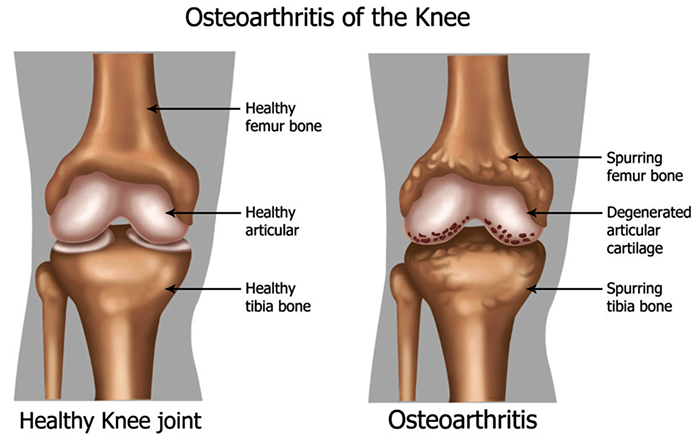
Treatment with knee osteoarthritis injections ranges from a one-time injection to weekly injections for three to five weeks. Pain relief is usually obtained by four to 12 weeks, and the effect has been shown to last for up to several months. The treatment can be repeated as necessary.
© 2023 WebMD, LLC. All rights reserved. View privacy policy and trust info
Top Picks
Corticosteroids, Hyaluronic Acid, and More
In this Article
If you have knee osteoarthritis, doctors can offer a variety of treatments to relieve your symptoms.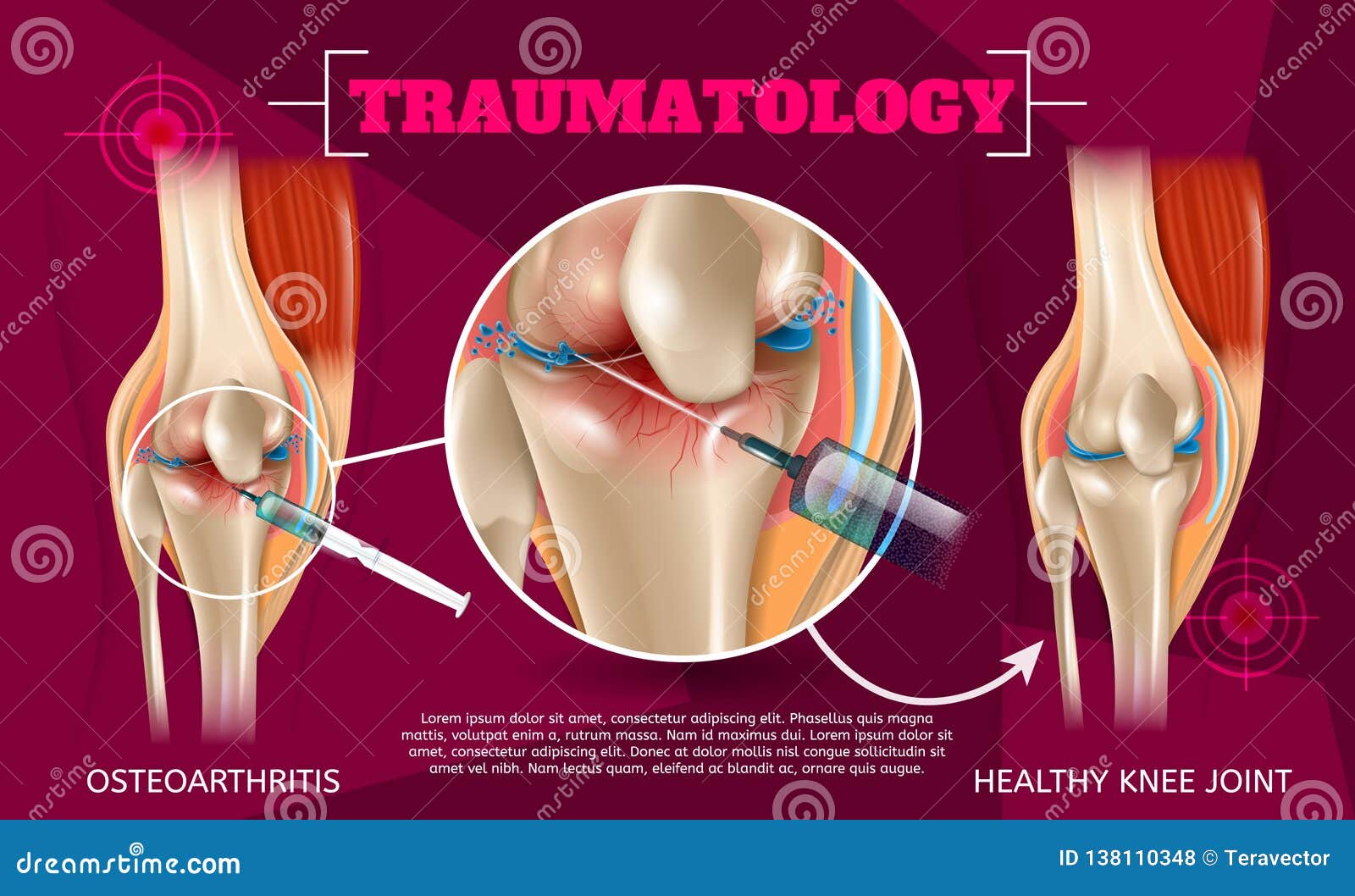 One option is to inject medication into your knee.
One option is to inject medication into your knee.
There are different types of injections, and they’re an important part of treating knee osteoarthritis for many people, says Roy Altman, MD, an osteoarthritis expert at UCLA. Injections can be especially helpful for people who haven’t gotten relief from NSAIDs like ibuprofen, or people who can’t take those drugs due to side effects.
Osteoarthritis (OA) is a common form of arthritis that often affects the knees. It develops when the cartilage – the smooth covering that protects the bones in the joint – breaks down. The surface of the bones becomes damaged, causing pain, swelling, stiffness, and disability.
How Knee Injections Work
First, your doctor will give you a shot of anesthetic to numb your knee.
Next, your doctor may use a needle to draw out any extra fluid that’s in your knee.
After that, you’ll get the pain-relieving injection, usually just below your kneecap. The shot shouldn’t hurt, and the drug will work throughout the joint, says John Richmond, MD, an orthopedic surgeon at the New England Baptist Hospital in Boston.
Different treatments have side effects that you should discuss with your doctor beforehand. The two most common types of knee injection for OA are corticosteroids and hyaluronic acid.
Reduce Inflammation With Steroids
Corticosteroid injections are useful for treating flare-ups of OA pain and swelling with fluid buildup in the knee, Richmond says.
These injections help relieve symptoms by reducing inflammation in the joint. But they’re not a perfect solution in every case. If you’re considering this treatment, keep this in mind:
They work quickly. These injections offer “very rapid” relief, usually within 24 to 48 hours, Richmond says.
The benefit is short-term. On average, the pain relief lasts from 6 to12 weeks, Richmond says. Often, that’s long enough to get you through a flare-up of osteoarthritis until your symptoms subside.
You shouldn’t use them frequently. A corticosteroid shot often works best the first time, Altman says. After that, they tend to give less relief.
After that, they tend to give less relief.
In most cases, Richmond tells his patients they can use these shots two to three times a year. Using them too often may damage cells in the knee that make cartilage.
Hyaluronic Acid
Most of the fluid in a healthy knee is hyaluronic acid, Altman says. But when you have knee OA, the hyaluronic acid in your knee thins. Your doctor can inject more hyaluronic acid into your knee to boost the supply.
Studies have shown that hyaluronic acid injections may help more than pain-relief medications for some people with OA. Other studies have shown they may improve symptoms as well as corticosteroid injections do. If you’re considering hyaluronic acid injections, keep these in mind:
It’s often not the first approach. Your doctor may suggest hyaluronic acid if:
- Your symptoms aren’t improved by pain-relief medications or non-drug treatments such as heat or ice.
- You can’t take pain relievers such as Advil or Motrin (ibuprofen), Aleve (naproxen sodium), or Tylenol (acetaminophen).

- A steroid shot doesn’t help enough, or you or your doctor are concerned about its side-effects.
It may work in different ways. After an injection, hyaluronic acid helps cushion and lubricate the moving parts within your knee, Altman says. This effect is fairly short-lived. But the treatment seems to also provide more long-term benefit by relieving pain and inflammation.
You may need more than one injection. Five versions of hyaluronic acid injections are available in the U.S. Some types require only one injection. Others require up to five injections, usually within a 5-week period. If needed, you can get another shot after 6 months, Altman says.
Platelet-Rich Plasma: Can It Help OA?
Another treatment getting attention is platelet-rich plasma (PRP). This requires drawing a sample of your blood and processing it to create a fluid that contains a higher-than-normal amount of platelets, tiny disks that help clot the blood. The doctor then injects the fluid back into your injured area.
The platelets in your blood contain natural chemicals that help heal injuries. Doctors have been treating other problems – like tendon damage – for more than a decade with PRP.
However, experts still know little about whether it works for knee osteoarthritis.
© 2009 WebMD, LLC. All rights reserved.
Photo Credit: NikiLitov / Getty Images
SOURCES:
Roy Altman, MD, professor, UCLA Department of Medicine, Los Angeles. Altman has been a consultant for a number of pharmaceutical companies.
John Richmond, MD, chairman of orthopedic surgery, New England Baptist Hospital, professor of orthopedic surgery, Tufts University School of Medicine, Boston.
CDC: “Osteoarthritis.”
American College of Rheumatology: “Osteoarthritis.”
Rutjes, A. Annals of Internal Medicine, August 7, 2012.
Bellamy, N. Cochrane Database of Systemic Reviews, April 19, 2006.
Axe, J. Sports Medicine and Arthroscopy Review, March 2013.
Smelter, E. Current Opinion in Rheumatology, February 16, 2013.
Current Opinion in Rheumatology, February 16, 2013.
American Academy of Orthopaedic Surgeons: “Platelet-rich plasma (PRP).”
Osteoarthritis of the knee: | symptoms | preparations
Osteoarthritis is one of the most common joint diseases, accompanied by the destruction of hyaline cartilage. Over time, bones, ligaments and muscles are involved in the pathological process.
Arthrosis of large joints have their own names: hip – coxarthrosis, knee – gonarthrosis.
In the absence of timely medical care, the pathology steadily progresses and becomes the cause of severe pain, a decrease in motor ability. In the absence of adequate treatment, the progression of arthrosis may lead to the need for joint replacement.
Symptoms
One of the first signs of arthrosis is pain in the knee when walking and moving. In the early stages, patients experience discomfort and temporary stiffness after rest. At first, the pain appears periodically and does not have a clear localization, but increases with physical exertion.
In the future, the symptoms become brighter, the range of motion decreases markedly.
Pain syndrome in gonarthrosis is characterized by:
- starting pains in the morning or after a long rest;
- association with physical activity – the knee hurts more when walking, standing or running for a long time. At rest, the pain subsides;
- connection with weather conditions – the pain increases with increasing humidity and atmospheric pressure, cooling;
- blockade of the joint, which is accompanied by sharp pain. Jamming occurs due to the infringement of a fragment of cartilage or bone that has separated from the cartilaginous covering or epiphysis of the bone.
Arthrosis proceeds in waves, exacerbations alternate with periods of remission. Exacerbations cause inflammation of the synovial membrane of the joint, so the nature of the pain changes to constant, aching and bursting. She worries both during movement and at rest.
Reasons
Arthrosis does not always have an obvious cause, and then one speaks of idiopathic, primary gonarthrosis. The cause of secondary arthrosis can be:
- injury – fractures, dislocations, damage to the meniscus and ligaments of the knee;
- birth defect;
- connective tissue weakness, joint hypermobility;
- autoimmune disease – rheumatoid arthritis, lupus erythematosus;
- infectious and inflammatory process – purulent arthritis, tuberculosis;
- high loads: running and intense squats are especially dangerous for the knees;
- overweight.
Arthrosis of the knee joint: treatment, preparations, injections
Conservative therapy is effective at stages 1-2 of the disease; in the later stages, surgery is unlikely to be avoided.
Acute symptoms are relieved with non-steroidal anti-inflammatory drugs – Diclofenac, Ibuprofen and their analogues tablets. If NSAIDs do not help, then corticosteroid drugs are prescribed.
Chondroprotectors are used to slow down the degradation of cartilage.
To improve blood supply and nutrition of articular structures, microcirculation improvement agents are used – Normoven, Nicotinic Acid, Cinnarizine, Pentoxifylline.
However, the best treatment for arthrosis today is injection therapy.
Intramuscularly prescribed:
- non-steroids – Flamax, Ketonal, Amelotex, Movalis, Lornoxicam, Diclofenac, Naklofen;
- hormones – Celeston, Flosteron, Diprospan, Hydrocortisone;
- vitamins – Neurorubin, Kombilipen, Milgamma, Trigamma, Compligam.
Hyaluronic acid preparations are prescribed intra-articularly, the frequency of injections and dosage is selected by the doctor based on the diagnosis. Glucocorticosteroids can be injected into the joint, but they should be prescribed with caution, since with frequent use they can worsen the condition of the cartilage tissue and aggravate the course of arthrosis.
Intra-articular injections
One of the latest developments of Czech scientists is carboxytherapy. It is based on the introduction of carbon dioxide into the joint cavity, which provokes interstitial hypoxia. The gas is supplied through a special device, causing acute oxygen starvation in the articular structures.
The result is a sharp influx of blood to the diseased area and a rapid acceleration of metabolism. Within a few minutes, the gas is removed, and the running mechanism works for a long time.
Another modern method involves the introduction of plasma into the joint – a liquid with blood cells. In this case, plasma with platelets is used, which perfectly relieves inflammation and pain, significantly slowing down the destructive process.
Physiotherapy
Comprehensive treatment of arthrosis of the knee joint includes physiotherapy. They improve local blood circulation, increase range of motion and potentiate the effect of drugs.
The doctor may prescribe:
- SWT – ultrasound – low-frequency currents contribute to the removal of osteophytes;
- magnet – the magnetic field stimulates metabolic processes, thereby accelerating tissue regeneration;
- laser – under the influence of radiation, intracellular metabolic processes are significantly improved, chemical reactions are accelerated, since the laser “works” as a conductor and enhances the effect of other methods of treatment;
- myostimulation – impulse currents restore the natural function of periarticular structures;
- electro-, phonophoresis – the introduction of painkillers or chondroprotective drugs by means of electric current or ultrasound;
- ozone therapy – oxygenation of “weak” places to activate their regeneration.
An important role in the treatment of arthrosis is played by therapeutic exercises, according to indications, massage procedures can be performed.
Operation
Surgical intervention is resorted to in advanced cases, at the 3rd stage of gonarthrosis. Most often, endoprosthesis is performed – today it is the most reliable technique.
Most often, endoprosthesis is performed – today it is the most reliable technique.
After the operation, the body recovers in 3-6 months. Side effects and complications are rare.
There are also organ-preserving operations:
- laser and rehabilitation arthroscopy;
- plasma ablation;
- chondroplasty.
If you are prescribed intra-articular injections, or you need to repeat the course, please contact us. The center provides the service of administering drugs into the joint cavity, manipulations are carried out by experienced doctors of the highest category, so patients feel as comfortable as possible during and after the procedures.
Make an appointment by phone +375 29 628 85 82
Treatment of arthrosis with chondroprotectors | Dikul Center
Treatment of arthrosis with chondroprotectors | Center Dikul
We use cookies to improve the site and its user experience.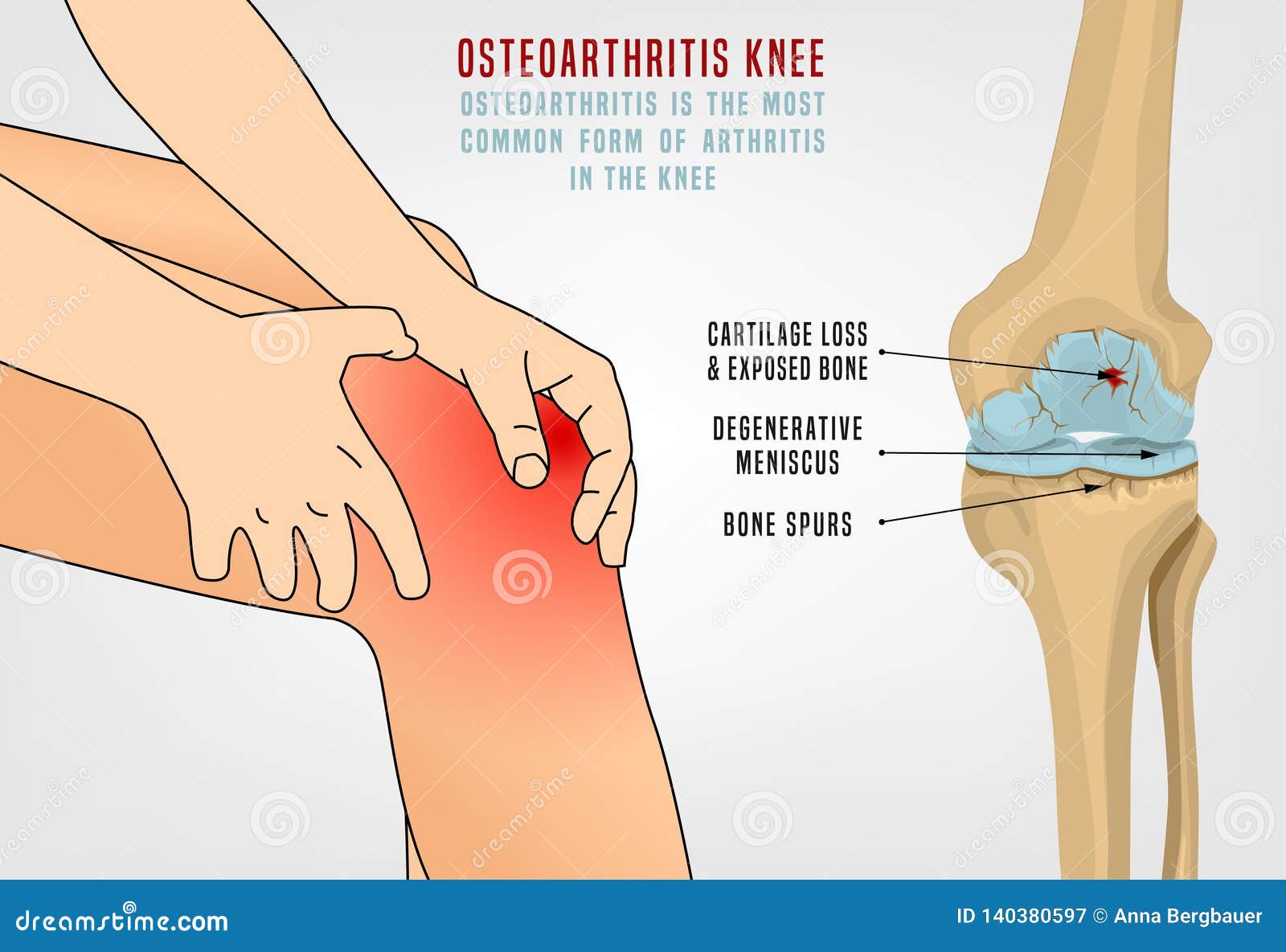 By continuing to use the site, you consent to the use of cookies. You can always disable cookies in your browser settings.
By continuing to use the site, you consent to the use of cookies. You can always disable cookies in your browser settings.
- Home
- Articles
- Joint diseases
- Treatment of arthrosis with chondroprotectors
2023-06-23
Treatment of arthrosis with chondroprotectors
Chondroprotectors are special drugs for arthrosis that improve the metabolism in the affected joint, which means they prevent or slow down its destruction. Most drugs for arthrosis of this kind contain biologically active substances of cartilage. Below we give the main, most important chondroprotectors.
Below we give the main, most important chondroprotectors.
- Rumalon. This arthrosis medicine consists mainly of bone marrow and cartilage extract from young animals. The medicine includes the following biologically active substances: peptides, proteoglycans, amino acids, nucleotides, chondrocytes, bone marrow cells.
The medicine for arthrosis improves the production of GAGs in the diseased joint, the synthesis of hyaluronic acid also improves, the composition of the synovial fluid becomes more favorable for the treatment of arthrosis, and the lubrication of the diseased joint also improves. This drug must be administered intramuscularly every other day, the dose of the drug for arthrosis is 0 1 ml. The cure for arthrosis occurs after 25 injections of rumanol. Side effects on this medicine for arthrosis are rare, but swelling of the face, a rash on the skin, and eosinophilia still occur. Treatment of arthrosis with this drug can be carried out only if arthrosis is in the first or second stage – in the third, the drug cannot be used.
- Artron (chondroitin sulfate). The principle of its action on the diseased joint is very similar to Rumanol, as well as other properties, including the dosage and time of the full course of treatment.
- Arteparon. This arthrosis drug is a combination of proteoglycans and GAGs. Since its composition is close to the composition of the cartilage of the diseased joint, there are no particular difficulties on the way of the drug from arthrosis to cartilage. It reduces the activity of proteases in the cartilage and inhibits the destructive activity of arthrosis. Application – intramuscular, it is necessary to enter 2 times a week for 2 months (dosage – 1 milliliter), then – once every two weeks for a period of 4 months.
- Mukartin. This medicine for arthrosis is a mucopolysaccharide sulfate ester, the principle of action on the diseased joint is similar to arteparone, the scheme of application is also the same, but the dosage is different – 2 ml.

Introduction of inhibitors of proteolytic enzymes in arthrosis.
This method is used for severe pain and reactive synovitis. Most often, inhibitors are administered for arthrosis of the knee joint. The most popular drugs for this type of arthrosis are Trasilol (Countercal) and Gordox. These drugs inhibit trypsin, chymotrypsin, cathepsins and other proteases. Trasilol or Gordox is injected into the joint, the dosage is 25,000 units. The treatment time for arthrosis is from 2 to 5 injections of these drugs for arthrosis, the intervals between injections are 2-3 days. Before the introduction of the drug into the body, it is necessary to make an intramuscular injection of diphenhydramine, and the medicine for arthrosis itself must be mixed with 0.002 g of hydrocorticone – this will eliminate acute pain from arthrosis.
Application of artificial lubrication of the joints.
This method of treating arthrosis improves the correspondence of two joints to each other and reduces the deformation and destruction of the cartilage. As an artificial lubricant, polyvinylpyrrolidone (PVP) or its 6% solution (hemodez) usually act.
As an artificial lubricant, polyvinylpyrrolidone (PVP) or its 6% solution (hemodez) usually act.
These arthrosis drugs are injected into large joints only. Injections should be made once a week, dosage – 5 ml of a 15% solution of PVP mixed with 25 ml of hydrocortisone – to eliminate pain from arthrosis. The course usually consists of 4-6 injections, although this number can be changed at the discretion of the doctor. If the joint with arthrosis is small, then the amount of PVP administered is reduced from one and a half to two times. This type of treatment for arthrosis is effective at any stage of reactive synovitis.
The following types of artificial joint lubricants are available:
- 15% PVP solution (water)
- The same solution, but in combination with hyaluronic acid. This mixture is used in the first and second stages of arthrosis without the presence of synovitis.
- The same solution in combination with arteparone. It is used in cases where the cartilage of the joint affected by arthrosis is largely destroyed, the menisci are affected, as well as in the case of arthrosis that appeared after any injury.


